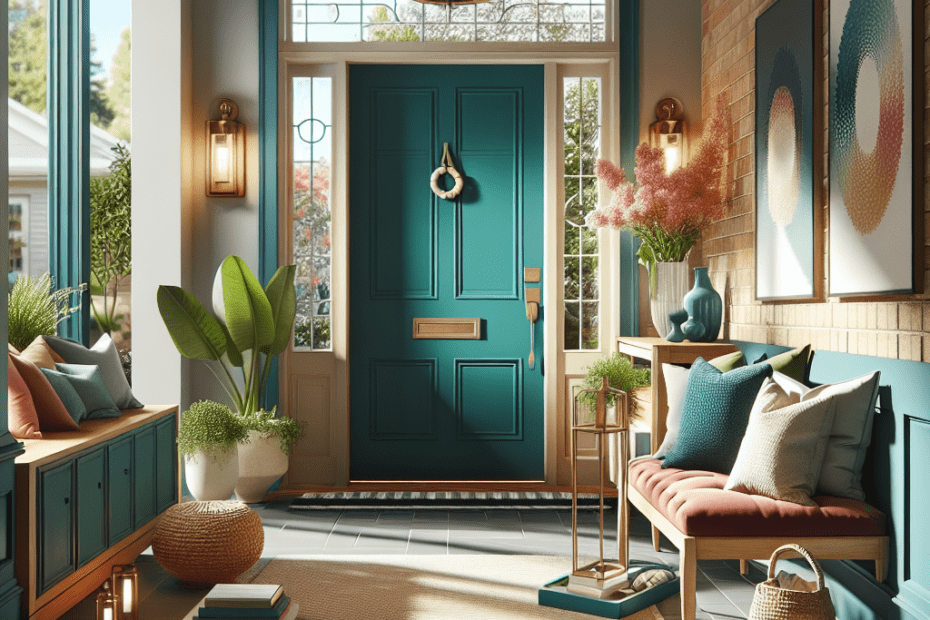“`html
Entryway Color Theory: Designing a Welcoming Entryway
When people think about home design, they often overlook the entryway. However, the entryway sets the first impression guests have of a home. Learning how to use entryway color theory can help design a welcoming and inviting space. This post will explore how color choices influence perceptions and emotions, and will provide practical tips for creating stunning entryways.
Understanding Color Theory
Color theory is the art and science of how colors interact, the feelings they evoke, and how they can be combined effectively. According to a study by the Institute for Color Research, people make a subconscious judgment about a product or environment in less than 90 seconds, and between 62% and 90% of that assessment is based on color alone. Understanding the basics of color theory will help anyone make informed choices for their entryway.
The Psychology of Colors
| Color | Emotion |
|---|---|
| Red | Excitement, Passion |
| Blue | Calm, Serenity |
| Yellow | Happiness, Warmth |
| Green | Balance, Freshness |
| Purple | Creativity, Luxury |
Each color brings a unique feel to a space. Reds can energize, while blues tend to calm. Yellow often evokes happiness and optimism, making it an excellent choice for a welcoming atmosphere. Greens suggest harmony and balance, offering a refreshing vibe. For those wanting a touch of luxury, purple can be an intriguing option.
Choosing the Right Colors for Your Entryway
To decide on the best color scheme for an entryway, consider the size of the space, the amount of natural light it receives, and personal preferences. Dominant, accent, and neutral colors should be used thoughtfully to create a balanced and inviting environment.
- Dominant Colors: Take up most of the space and set the mood. For example, a light blue dominant color can make the entryway feel spacious and peaceful.
- Accent Colors: Add interest and variety. A bold red or orange accent can energize the space and make it more exciting.
- Neutral Colors: Provide a foundation that makes other colors pop. Whites, grays, and beiges pair well with any color and keep the space grounded.
Practical Tips for Applying Color Theory
When transforming an entryway, consider the existing decor and the overall flow of changes into adjacent rooms.
- Consistency: Use colors that harmonize with the rest of the house. This can create a seamless transition from the entryway to other areas.
- Contrast: Implement contrasting colors to provide dynamic visual interest. Pair a dark navy wall with a white door to create a striking contrast.
- Lighting: Natural light can significantly alter color perception. Always test colors in the space to see how they look at different times of the day.
- Textures and Materials: Incorporate different textures and materials like wood, metal, or plants to enhance the entryway’s visual appeal without overwhelming it with color.
Key Takeaways
- Color theory significantly impacts the perception and emotional response of an entryway.
- The psychology of colors aids in choosing the right mood for welcoming guests.
- Choosing the right dominant, accent, and neutral colors can harmonize the space.
- Practical tips like consistency, contrast, and consideration of lighting are crucial when applying color theory.
FAQ
- What is color theory?
Color theory is the study of how color affects perception and emotion, and how colors can complement and contrast with one another effectively.
- Why is the entryway important in home design?
The entryway is the first impression a guest has of the home and sets the mood for the entire dwelling.
- How can I make my entryway feel bigger?
Use lighter colors, like pastels or white, to make the space appear larger and more open.
- What colors make an entryway feel warm?
Warm colors such as yellows and oranges can create a cozy and inviting atmosphere.
- How does lighting affect color choice in an entryway?
Natural and artificial lighting can change how colors look throughout the day, so it is essential to test colors at different times.
By carefully considering entryway color theory, individuals can craft a space that not only makes a memorable first impression but also creates a welcoming atmosphere for guests and residents alike.
“`
